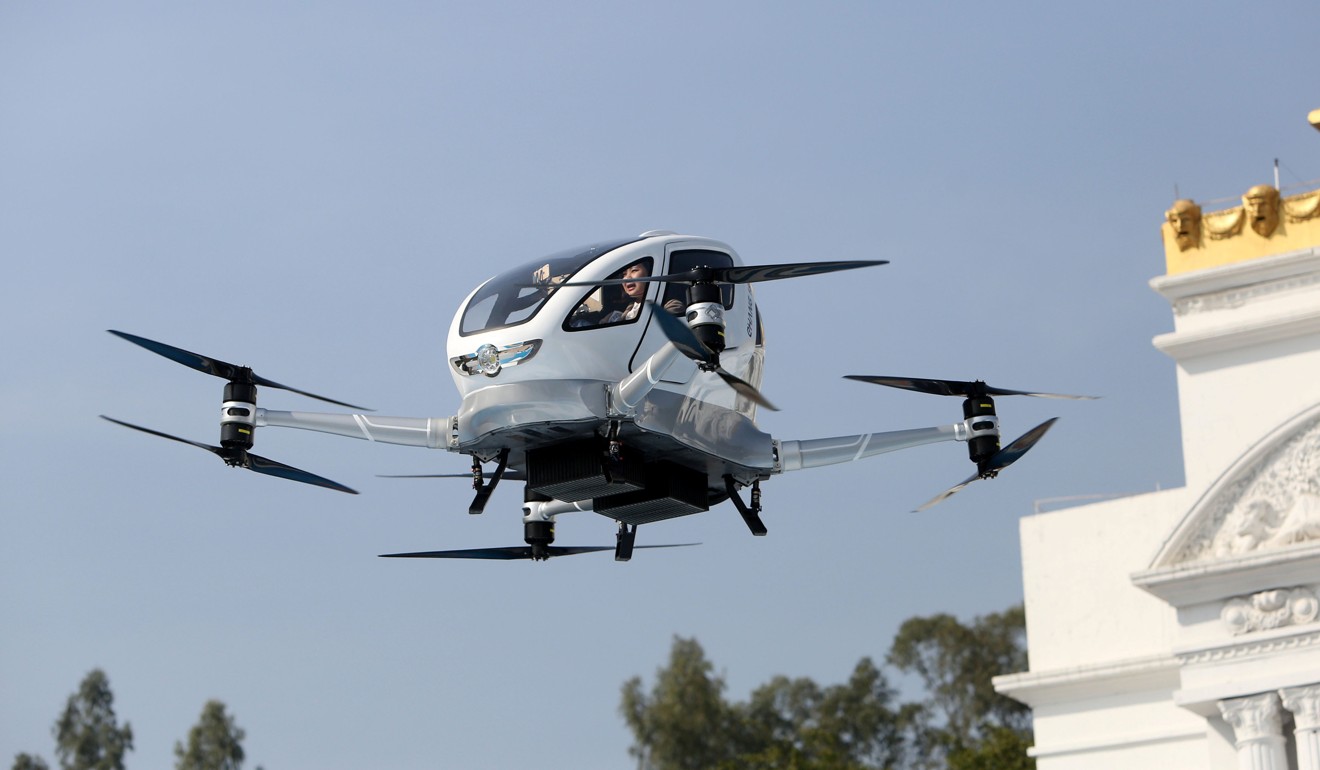
China’s Ehang broke the world drone display record – but the aerial bots were out of sync
Guangzhou-based Ehang deployed a fleet of 1,374 drones at a Labour Day show in Xi’an to beat the 1,218 drones flown by Intel in February at the Pyeongchang 2018 Winter Olympic Games
China’s Ehang on Tuesday broke the world record for the largest number of drones used at an airborne show in the northwestern city of Xi’an, but witnessed an epic fail that marred its latest achievement.
The Guangzhou-based company set a new Guinness World Record for the “most number of unmanned aerial vehicles airborne simultaneously”, deploying 1,374 drones above Xi’an’s 600-year-old city wall on a 13-minute flight that spread for more than a kilometre.
The show’s live broadcast footage, however, showed about half of the drones in flight was in disarray.
That resulted in a failure to complete the Chinese characters for “Running Xi’an”, “New Era” and other phrases as part of the Ehang programme.
The performance also did not complete “1374”, representing the number of drones in the show, and the date “5.1”.
Ehang’s Egret drones soared about 260 metres above Xi’an’s city wall, programmed to create a hovering display that measured 1,200 metres in length and 100 metres deep, according to a company statement posted on Chinese microblogging site Weibo after the show.
The drone maker was paid 10.5 million yuan (US$1.6 million) to perform its record-breaking feat at the Labour Day show, according to an announcement posted on the official platform for government procurement information run by the Ministry of Finance.
Ehang issued a public apology for the performance of its drones on May 6. The Global Positioning System mechanisms on 496 of the drones in the show were interfered with, according to a statement on the company’s Weibo account.
The source of that “external interference” was still being investigated, an Ehang spokesman said.
A Xi’an city representative did not respond to an email request for comments.
Already used in logistics, transport and agriculture, the deployment of remote-controlled drones as entertainment has become increasingly popular as part of public performances in China.
Mainland drone makers ZeroTech and High Great, for example, supplied 300 drones for the 2018 edition of the CCTV New Year’s Gala – also known as the Spring Festival Gala – an annual variety show broadcast for the Lunar New Year that gets as many as 800 million viewers.
Ehang had previously set the Guinness World Record for most drones flown simultaneously in December last year, with a fleet of 1,180 flying machines, in Guangzhou. That bested the company’s previous record of 1,000 drones flown in February of the same year in the city.
Despite the flawed performance in Xi’an, Ehang surpassed the 1,218 drones flown by Intel at the opening ceremony of the Pyeongchang 2018 Olympic Winter Games in February this year.
Ehang is one of the Chinese companies now leading innovation in drone technology.
In February, the Guangzhou-based drone maker successfully conducted passenger flights for its autonomous flying taxi.

The manned flights of the Ehang 184 have given a boost to the efforts of technology companies and the central government to optimise urban transport and mobility with new products and services.
Shenzhen-based start-up DJI, founded in 2006, has become the world’s largest maker of recreational drones, with an estimated 70 per cent global market share. Its drones are also used by businesses and militaries around the world, and even in rescue operations.
Without specifying which drones were used in these operations, a DJI report this week said at least 124 people in peril have been rescued with help from drones, including an incident in which 24 tourists got lost in a mountain without food or water.
Semiconductor giant Intel, however, has been leading in the use of drones for efforts to conserve World Heritage Sites.
Intel and the China Foundation for Cultural Heritage Conservation teamed up last week to use the US chip maker’s drone and artificial intelligence technology to help scout the remote and severely weathered Jiankou section of the country’s Great Wall.

